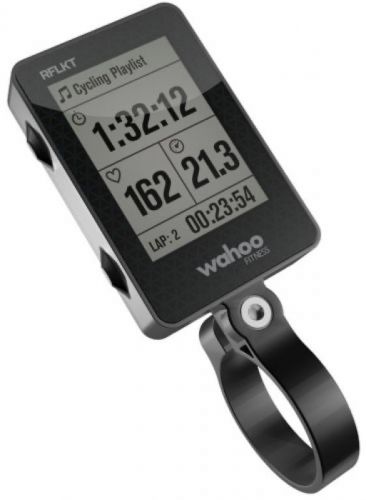This article ran in the April 1, 2013 issue of Bicycle Retailer & Industry News.
ATLANTA (BRAIN) — Wahoo Fitness is just four years old and couldn't have existed more than about five years ago. But the company makes products that are increasingly central to many cyclists' time on (and off) the bike. It's also a company that lives on the borders of several market territories: it's part hardware company, part software. It's partly an iPhone accessories maker and partly a bike and fitness industry brand.
But Wahoo's focus is clear and simple: making athletes' performance data accessible on their iPhones.
The privately held Georgia-based company won't release financial data, but company officials tell BRAIN it has tripled its revenue in each year of operation. "Angel investors" — friends and family — invested about $1 million in late 2011.
Serial entrepreneur and cyclist Chip Hawkins founded Wahoo in 2009; he borrowed the name from an earlier company he owned, Wahoo Docks (that company, in turn, was named after Wahoo Creek, a tributary of Georgia's Lake Lanier). Its 25 employees are stuffed into a three-room basement office space, cohabiting most days with about ten bikes, four dogs, and the occasional baby.
Its employees are invariably endurance athletes and tech geeks. Just a handful have bike industry experience, including national sales manager Eric Stobin, who has worked for LeMond Fitness, Breezer and Spinergy.
Some of Wahoo's first products exploited the ANT+ wireless system that is built in to most power meters (see sidebar: "Wireless systems promise to simplify"). The company makes a dongle that attaches to the bottom of an iPhone to pick up the ANT+ signal. it also made ANT+ transmitter devices, including heart monitors, speed and cadence sensors and step counters for runners. It offers a wireless bathroom scale and makes various accessories to mount iPhones on handlebars.
"The iPhone is such a powerful device, we leverage its brains to do things the iPhone can't do. That allows us to keep pricing reasonable for the consumers," said Mike Stashak, Wahoo's chief marketing and sales officer.
Wahoo has quickly established its leadership in the segment, even consulting with other brands, including Kurt Kinetic, on similar products. In the high tech tradition, Wahoo's products are far from a closed system. Its apps work with wireless products from other brands, and, through an API, other apps mate with Wahoo devices. At last count there were more than 100 apps in the iTunes store that worked with Wahoo's transmitters.
The market for iPhone accessories appears unlimited currently and Wahoo is at the center of a much-reported trend of personal fitness analytics, along with Nike's Fuelband and similar products.
Wahoo's engineers are working on some products for Android smart phones, but for now Wahoo's niche is dependent on the whims of Apple's Cupertino wizards. When Apple decided to include a new wireless system, Bluetooth Smart, in its new phones and tablets, it likely killed the long-term potential for Wahoo's ANT+ dongle. But it opened the door for other new products. With Bluetooth Smart built in, the iPhone (and its apps) can act as a very smart bike computer. Since some cyclists prefer not to mount their phone on the handlebar, Wahoo introduced its RFLKT head unit, which is little more than a wireless external monitor for the iPhone, connected via Bluetooth Smart.
Wahoo made a big step toward the bike market and hardware manufacturing last year when it introduced its KICKR stationary trainer. The trainer uses a "wheel-off" design and has an integrated power meter. Naturally it relies on an iPhone or iPad for its brains and offers various ride simulation and power training features. Wahoo expects other app makers to make use of the API and produce apps that will work with the trainer.
Moving from small inexpensive electronic devices to a heavy $1,100 trainer was a big step, Wahoo's director of marketing, Molly Andruszkiewicz, concedes. But she said the decision reveals that while Wahoo is part of many markets, at its heart it may just be a bike brand.
"Chip was excited about building a trainer that would make training indoors less horrible, more fun and more interesting ... it was a difficult decision to make the capital investment, the upfront investment was massive. But we're athletes first and we build products we want," Andruszkiewicz said


